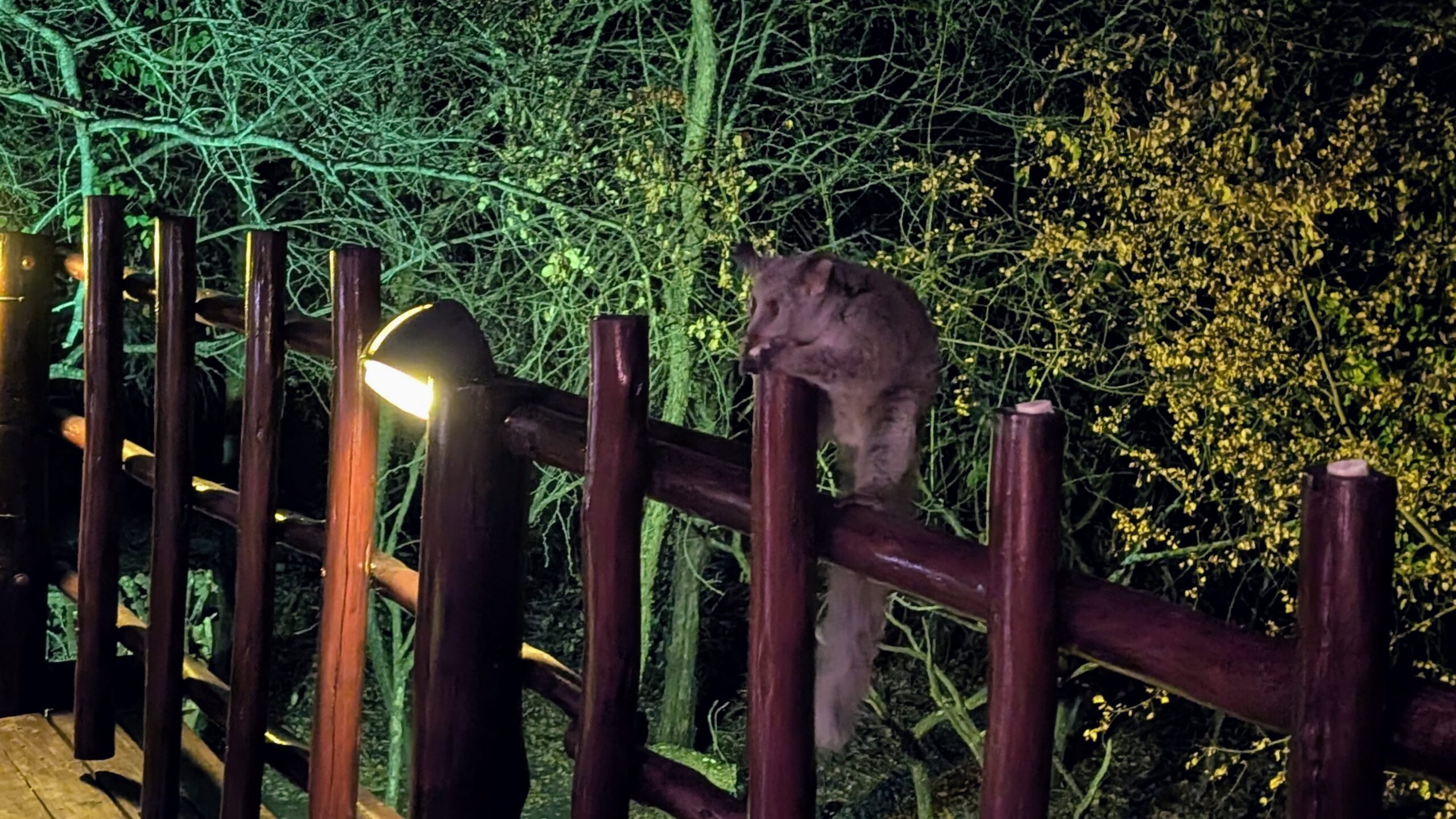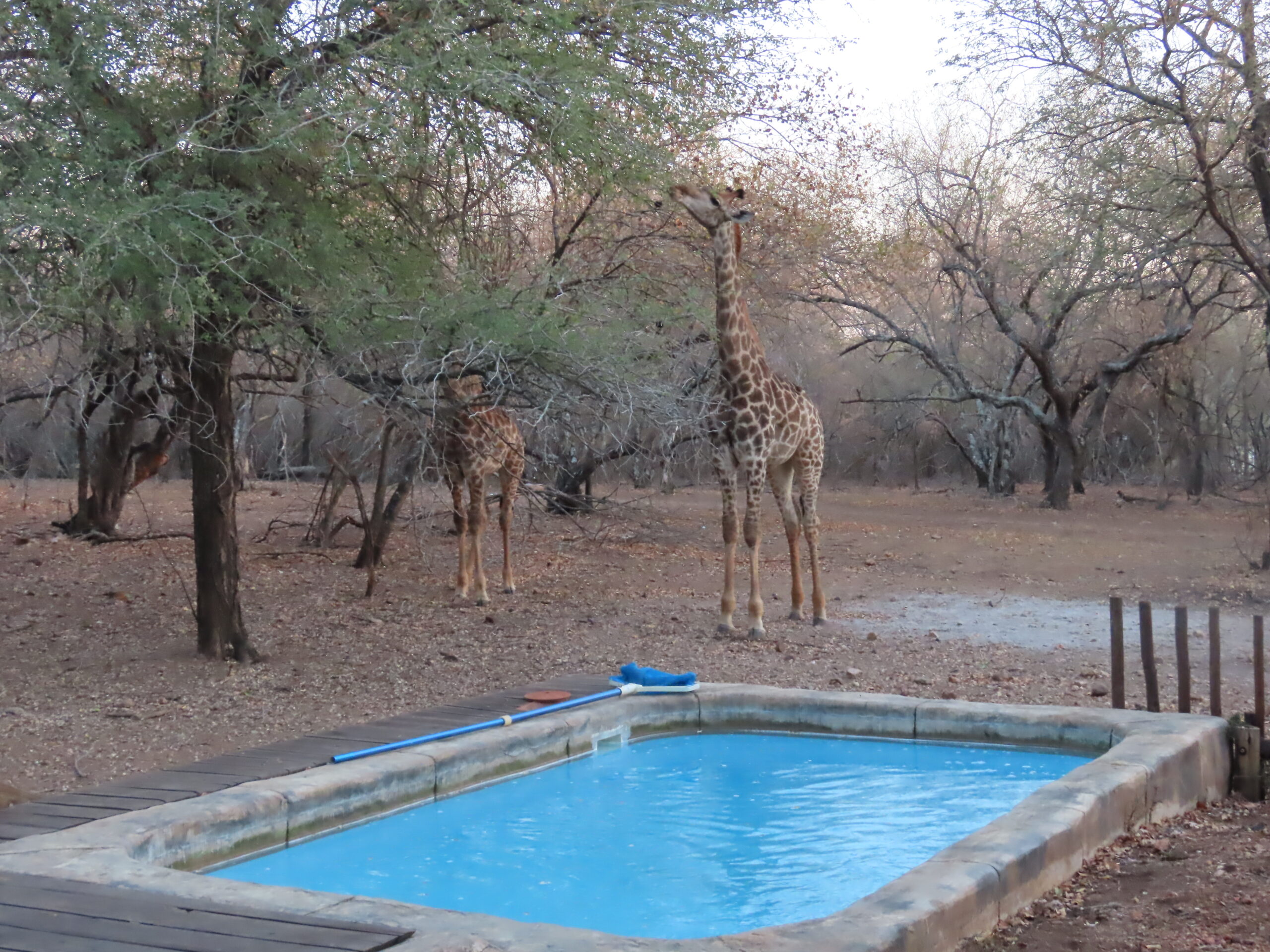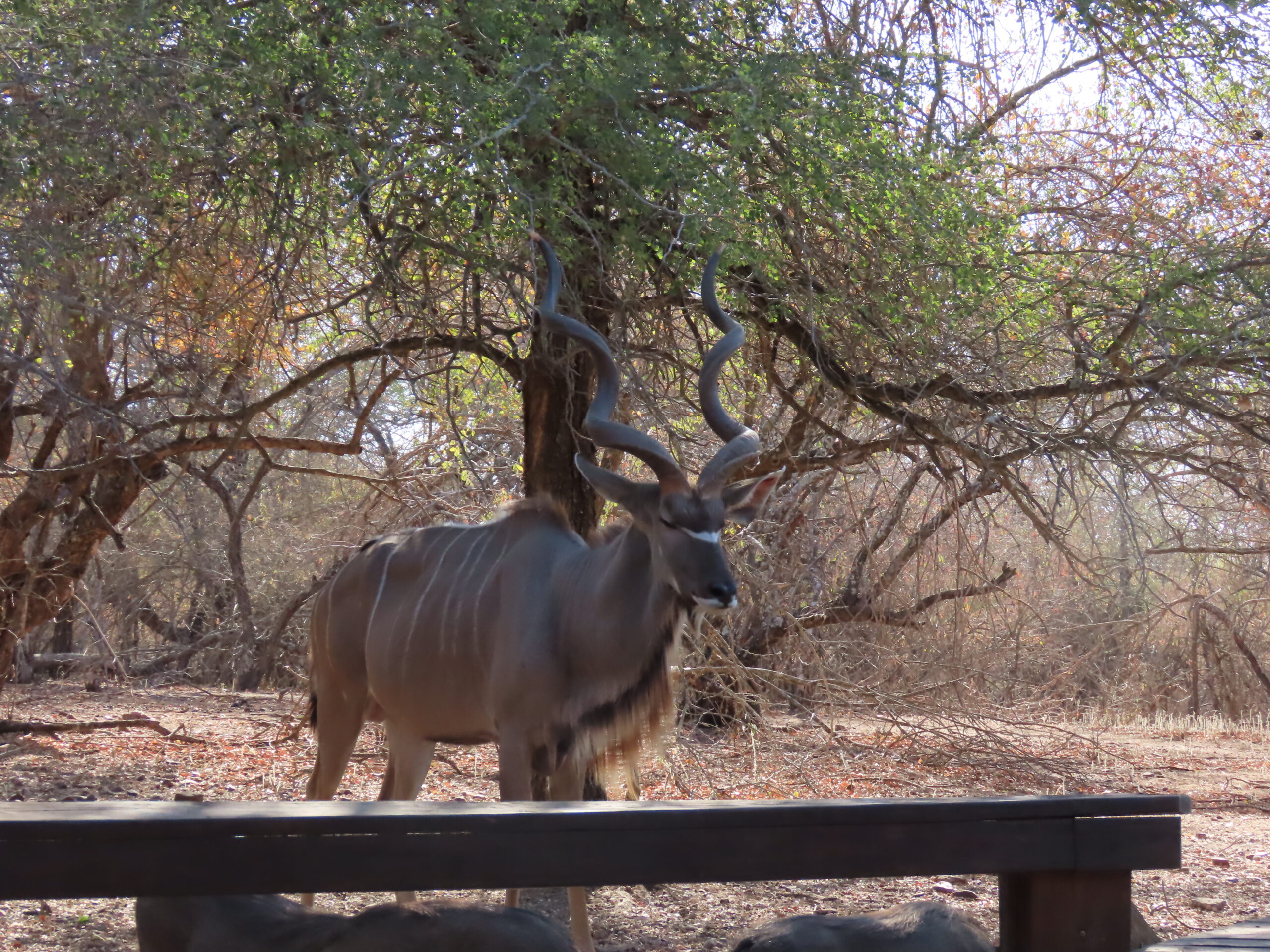
Today’s main photo is of a thick-tailed bushbaby, which few have ever seen. Every weekend when we dine at Jabula, we see this elusive nocturnal animal when the staff places a piece of banana along the railing to attract their nighttime visitor.
Guests are always in awe of seeing this special creature, and phones are busy attempting to take a photo of this difficult-to-capture, fast-moving animal.
Here is some detailed information about the bushbaby, at least twice the size of the tiny bushbabies:
The Thick-Tailed Bushbaby: A Nocturnal Acrobat of the African Night
The thick-tailed bushbaby (also known as the greater galago), Otolemur crassicaudatus, is the largest of the galago species and one of Africa’s most captivating nocturnal primates. With its oversized eyes, expressive ears, and extraordinary leaping ability, this elusive creature has adapted beautifully to life in the treetops. Found in wooded areas, forests, and savannas across eastern and southern Africa, including parts of Kruger National Park, the thick-tailed bushbaby is both mysterious and marvelously equipped for life after dark.

Weighing between 1 and 2 kilograms and measuring up to 75 cm in length (including the tail), the thick-tailed bushbaby is significantly larger than its more diminutive cousins. Its long, bushy tail not only helps with balance when leaping between trees, but also serves as a visual identifier. The body is covered in dense, woolly fur that ranges in color from gray to brown, allowing it to blend effortlessly into the treetop shadows.One of the bushbaby’s most striking features is its enormous eyes, perfectly adapted for night vision. These primates are entirely nocturnal, and their sharp vision is complemented by acute hearing, thanks
their large, mobile ears. Bushbabies can swivel their ears independently to detect the faintest rustle of leaves or insect movement, giving them a near-surreal awareness of their surroundings.
Their diet is varied and omnivorous. Thick-tailed bushbabies feed on fruits, tree gum, insects, small birds, and even eggs. They are particularly fond of the sticky exudate produced by acacia trees, which they harvest by gouging into the bark. This makes them vital to their ecosystem, as they help with seed dispersal and control insect populations.

Social by nature, thick-tailed bushbabies often live in small groups, although they forage alone. They communicate through a variety of vocalizations, ranging from sharp barks and grunts to eerie cries that echo through the night. These calls serve to establish territory, alert others to danger, or locate one another in the dense forest.
Their locomotion is another marvel. Thick-tailed bushbabies are powerful leapers, capable of jumping over 2 meters from branch to branch using their strong hind limbs. On the ground, they move with a bounding gait, but they’re much more agile and comfortable among the trees. Their hands and feet are equipped with opposable thumbs and grooming claws, which aid both in movement and personal hygiene.
Despite their adaptability, thick-tailed bushbabies face several threats. Habitat loss due to deforestation and the expansion of human settlements continues to shrink their natural range. In some regions, they are hunted for bushmeat or captured for the illegal pet trade. However, they are currently classified as Least Concern by the IUCN, thanks to their relatively wide distribution and ability to live in both protected and modified environments.

For those lucky enough to hear a thick-tailed bushbaby’s calls on a warm African night, or to glimpse its wide eyes in the beam of a flashlight—it’s a magical reminder of the life that thrives while the world sleeps. Agile, intelligent, and adapted to the night, the thick-tailed bushbaby is a quiet yet vital part of Africa’s nocturnal ecosystem.
On another note, in four days, on Tuesday, July 15, Kady and Rich will begin the long trek back to the US. The layover time in London has been reduced from nine hours to seven, which helps a little. We’ll be anxious to hear how they are feeling once they return. It’s never easy, but it seems that going from east to west is a little better with time gained as opposed to lost.
Last night the four of us had dinner at Ngwenya Resort enjoying the meaty buffet and its wonderful offerings. This all-you-can-eat buffet with delicious meats and side dishes is ZAR 200, US $11.22. With our drinks, tax and tip the total bill was ZAR 807, US $45.28.
We’ll be sad to see Kady and Rich leave but, Tom and I will easily roll back to our usual active lives in the bush with our human and animal friends. As always, life will be good.
Be well.
Photo from ten years ago today, July 11, 2015:

